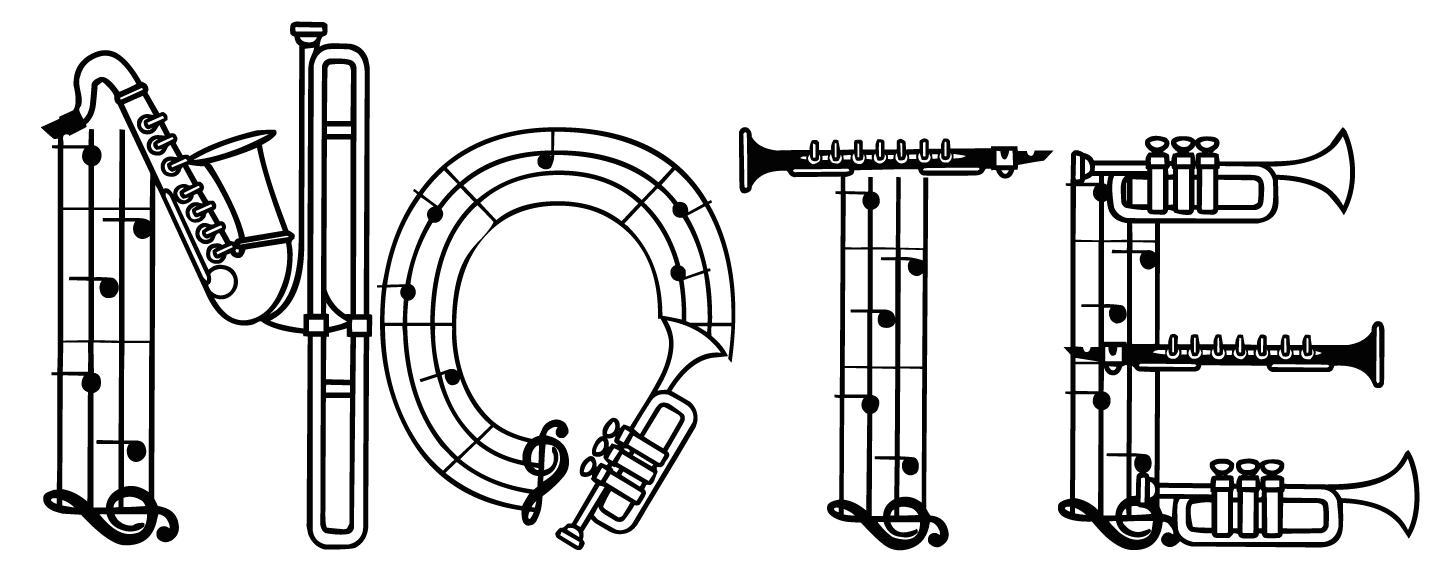

A fun game for learning chord combination
Author: Kai-Chieh Huang | Version: 1.0 | Date: Nov.16,2014
NoteBomber is a fun Music Game designed to help users learn the music theory of note combination in chords in an easy and fun way! While I was learning guitar in the past, I felt extremely bored when learning the music theory of chords and the interaction between notes. Since mostly, we learn music theory by counting the notes in a more mathematical way, for this project, I want to make a musical game that can help people learn the note combination in the chord in a fun way. After a few days of thinking about what game to design, the idea of Bumberman popped into my head. However, instead of using bombs, the characters in my game will use notes to generate sound waves to attack each other. Each combination of notes will make different bombing effect. For example, when you put do, mi, so onto the play field, it forms a C chord and it will have a special thunder bomber effect with extra damage. To make it more interesting, each player can only generate one or two notes at the beginning, and they will need to get game items on the battlefield to generate more notes each time. There will also be game items like a crescendo sign that makes the volume larger and thus creates a further bombing distance and also a fast forward sign that speeds up the player who eats it. More game items will be developed in the future. For adding the educational value to this game, there will be a table for players to check out the note combination of each chord and the bombing effect of each combination so players can remember them and use them in the game to make a more powerful move while playing. As they are trying to use these note combination moves in the game they will start to remember the note combination of each chord. The system of this program is designed using C++ and open source libraries: RtAudio, OpenGL/GLUT, MCD-API, and Fluidsynth.
Design
Motivation + System Design
Motivation:
After observating the programs of the homeworks so far, I feel like the programs getting most attention are the ones with simple aesthetic design and fun idea but not nessasarily hard or complex in the technical way. As I was thinking about this project, I made several principles for myself. I wanted to make a fun game that is simple with value in music education and two players can interect. Also, while I was learning guitar in the past, I feel extremely bored when learning the music theory of chords and the interaction between notes. As a result, for this project, I want to make a musical game that can help people learn the note combination in the chord in a fun way.Initial Interface Design:

Software Architecture:

How To Play
NoteBomber is a fun Music Game designed to help users learn the music theory of note comnination in chords in an easy and fun way! The characters in this game will use notes to generate sound bombs to attack each other. In this game the note scale "Do", "Re", "Me", ... to "Ti" is denoted as "C", "D", "E", ... to "B". The note scale of the NoteBomb will be looping from "C" to "B" and repeat. The players will need to wait till the right time to release the note scale they want. When the notes combine into a chord it will make different bombing effects. For example, if you throw a "Do" note following with a "Me" and "So", you can make it a major C chord and it will have a Thunder bombing effect, which will hurt both players for 0.5 blood. For more chord combination moves please check out the chord table from the intro interface. In the beginning each player can only generate 3 NoteBombs, and they will need to get game items on the play field such as a large volume sign to increase the bombing distance of the bomb or a plus bomb sign to increase the NoteBombs they can release each time. Enjoy and have fun!
Control


Chord Moves

Milestones
Milestone#1(Nov, 10-16, 2014):
- Basic intro interface image load in -> Complete!
- NoteBomber sign in the intro interface wobbles -> Complete!
- Mouse on effect of the options in the intro interface -> Complete!
- Bombing animation while user hits play -> Complete!
- Basic player control interface image load in -> Complete!
- Basic player movement control -> Complete!
- Basic player release bomb control and animation -> Complete!
- Basic sound generate while bomb explode using fluidsynth -> Complete!
- Load background music -> Not yet!
Milestone#2(Nov, 17-30, 2014):
- Load background music -> Complete!
- Chord table interface -> Complete!
- How to play interface -> Complete!
- Character release multiple bombs with different notes -> Complete!
- Chord combination with different moves -> Complete!
- Basic game items to enhance character -> Complete!
- Character bloodline to determine who "dies" and "loses" -> Complete!
- Winner animation with fireworks and option to restart and quit -> Complete!
Future Works:
- Chord combination moves of chord major F and major G -> Complete!
- Battle timer count down
- Different bombing animation for Chord combination moves
- Animation while character is hit -> Complete!
- Spinning to the chord table and how to play interface
- Use the volume of users to determine the power of bomb
- Game item with musical interaction